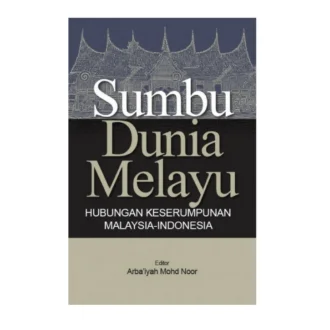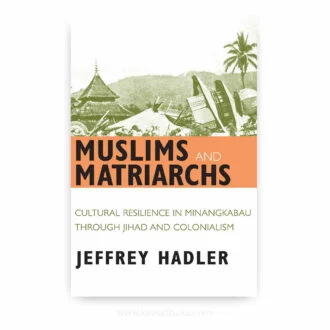Islamisation and Its Opponents in Java: A Political, Social, Cultural and Religious History, c. 1930 to Present draws on a formidable body of sources, including interviews, archival documents and a vast range of published material, to situate the Javanese religious experience from the 1930s to the present day in its local political, social, cultural and religious settings. This is the final volume in a series concerning the history of the Islamisation of the Javanese people by M.C. Ricklefs. Beliefs—or disbeliefs—about the supernatural are important in any society, so this series seeks to address questions that are not about the Javanese alone. The first of these books was Mystic synthesis in Java: A history of Islamisation from the fourteenth to the early nineteenth centuries (2006) and the second Polarising Javanese society: Islamic and other visions c. 1830–1930 (2007); both of these are summarised briefly in the first chapter here. These two and the present book focus in large part on the connection between what people believe and what they do. Much is about religion and politics, about the relationship between two forms of authority, knowledge and power and those who wield them. Pursuing the broader issues, the author has drawn comparisons with other societies and times in these books, and the final chapter in this volume considers some broad, the author thinks universal, topics.
In 1930 the Javanese were predominantly rural dwellers, but there was also a growing urban proletariat as well as a tiny urban-based educated elite. Population growth already placed serious pressure on resources, which was heightened significantly with the onset of the Depression of 1930. That growing urban proletariat was particularly hard hit by the Depression. A process of Islamisation had been going on amongst the Javanese since the 14th century, but in the eyes of Islamic reformers there was still a long way to go. Indeed, the process of Islamisation had been halted, in some ways perhaps even reversed, by developments since the middle years of the 19th century. Then there had emerged in Javanese society a group—in fact the majority of Javanese—known as the abangan, the nominal Muslims, in contrast to the pious santri. These social distinctions had been politicised and thereby made sharper by the growth in the early 20th century of political movements whose constituencies followed those social lines. But by 1930 this politicisation was being halted and probably reversed, as the Dutch crushed the main political movements responsible for the politicisation of social divisions.
Javanese society was, for the most part, not only impoverished but also ill-educated. Literacy rates were low and close to zero in the case of women. But Javanese were not culturally impoverished. A rich cultural life gave meaning to most Javanese, from hard-pressed peasants to kraton aristocrats and urban ‘moderns’. Little of this cultural life was yet influenced by reformist Islamic norms. Women were neither secluded in their houses nor did they wear all-enveloping clothes in public—rarely even headscarves, so far as we know. Islam was a presence in Javanese life, but it was only partly the Islam of urban-based Modernist intellectuals. To a much greater degree it remained the Islam of the rural kyais, of mystical tarekats and of a majority of Javanese who constituted the otherwise-uninterested abangan seeking Islamic ritual embellishment for a birth, circumcision, wedding or funeral. Even pious communities in the countryside clung to beliefs and rituals which the Modernist reformers regarded as ignorant superstition at best and heresy at worst. These Modernists were challenged not only by prevailing norms in the countryside but also by other urban moderns for whom purified Islam did not seem the appropriate key to the future. Such leaders were found in the Taman Siswa organization and in various ‘secular’ (i.e., not religiously Islamic) political parties.
Urban nationalist leaders wished to mobilise a mass following to overthrow Dutch colonial rule. Given the repressive nature of that regime in the 1930s, however, such dreams were frequently dreamt behind bars. Such nationalist movements as were able to survive under the conditions of the 1930s were split among themselves by ideological and personal differences.
Insofar as significant numbers of Javanese followed formal organizations in the 1930s, they were more likely to be led by the few Javanese kraton nobles who were prepared to act on their sense of noblesse oblige, by the kyais of NU or by other religious organizations. The politically caged rulers of Central Java’s Vorstenlanden and their kraton aristocracies were mostly, however, more interested in preserving their social standing and the associated rituals that entailed supernatural powers and thereby attracted superstitious commoners to them. That aristocratic social standing and those rituals were also useful to the Dutch regime as a means of preserving as far as possible popular acquiescence with the status quo.
Thus stood Javanese society and its Islamic faith on the precipice of the cataclysmic years from 1942 through 1949. Impoverished, illiterate, socially polarised but depoliticised by colonial repression, Javanese society was about to become repoliticised by the devastating—but in the end politically liberating — experience of the Japanese occupation and the Indonesian Revolution. It would still be impoverished, illiterate and socially polarised, but repoliticised and freed of the colonial police-state which had prevented domestic Javanese conflicts from breaking out into violence. The result would be both the achievement of independence, with Java as a central part of the new Republic of Indonesia, and—tragically—the first significant bloodshed between Javanese santri and abangan.











Reviews
There are no reviews yet